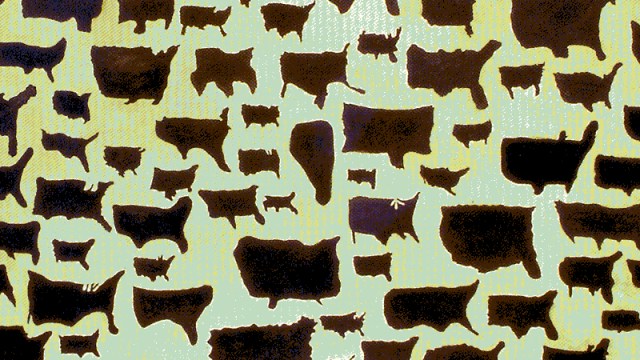The Superstition Mountains to the east of Phoenix, AZ reportedly hold a legendary motherlode of gold known as the Lost Dutchman Gold Mine. Through the years, truth and fiction about this mine have been irrevokably mixed up, producing 62 varieties of the legend. Before we get into those, here are some genuine facts about the Lost Dutchman Gold Mine:
There really was a Lost Dutchman, although he wasn’t Dutch. Jakob Waltz was nicknamed Dutch (i.e. from the Netherlands) because he was Deutsch (i.e. from Germany; a common error, see also ‘Pennsylvania Dutch’). A man of that name was born in Württemberg in 1810 and emigrated to the U.S. From the 1860s onward, he homesteaded in Arizona, pursuing mining and prospecting as a hobby – a quite unsuccessful one. Waltz fell ill and died in 1891, but not before revealing the location of an alleged gold mine to Julia Thomas, the neighbour who cared for him. As early as Sept 1, 1892, a local newspaper relates how Thomas and others were trying to locate the mine. When they failed, it is reported they sold copies of a map for $7 each. After about a decade, the story sank into obscurity, regaining notoriety when it had acquired more spectacular aspects, in a fashion not dissimilar to a game of Chinese whispers.
The Lost Dutchman Mine is the most famous in American history. Quite literally so, according to Southwestern Folklore author and researcher Byrd Granger. In 1977, Granger noted that the Lost Dutchman story was printed at least 6 times more often than the story of Captain Kidd’s lost treasure or the story of the Lost Pegleg Mine in California.
The Lost Dutchman Mine is also the most sought after in American history. Attempts have been made to locate it at least since 1892. Some 8,000 people each year try to find it. And not just crackpots: former attorney general of Arizona Bob Corbin was one of the many mine-seekers.
The Lost Dutchman Gold Mine has been situated in four quite distinct locales. It has been looked for in Colorado, California and in two places in Arizona – the other one being near Wickenburg, 180 km north-west of the Superstition Mountains.Granger distinguished three main elements to the story, with the most complete version of the story incorporating all three legends. He argued that each of these three legends contains some truth, but have become badly distorted through time. The legend continues to evolve: recent additions are versions in which the gold is really a secret treasure trove of the Knights of the Golden Circle, a Confederate secret society active during the American Civil War (1861-1864).
A cryptic map of the gold mine, or just a fake?
Tales of the lost Apache’s gold, or Dr Thorne’s mine. The Apache (some even mention their famous chief Geronimo in this respect) are the only ones who know of a very rich gold mine in the Superstition Mountains. That is, until Miguel Peralta’s family stumbles upon the site and start mining the gold. They are massacred by the Apache in 1850. Years later, an army doctor by the name of Thorne treats an ailing Apache (possibly a chief) who as a reward takes him to the mine – blindfolded, of course – where he can take as much gold as he can carry. Thorne is later unable or unwilling to reveal the location of the mine. Some writers have indicated that there actually was a Miguel Peralta whose family operated a gold mine – but this was in the 1860s, near Valenciana in California. After the mine became unprofitable, Miguel Peralta turned to fraud. He sold the mining rights to a large area in southern Arizona and New Mexico to Dr George M. Willing, Jr., based on a deed originally granted by the Spanish Empire. The deed was bogus, and Willing never recovered his money. This might be the way the Peralta story became incorporated into the Lost Dutchman legend. Additionally, there never was an army doctor named Thorne in the 1860s in Arizona. There was a Dr Thorne who had a private practice in New Mexico, however. He claimed to have been abducted by Navajo in 1854, discovering a rich gold vein during his captivity. Thorne told his story to three solders in 1858, upon which the soldiers unsuccessfully set out to find the vein.Tales of the Lost Dutchman. This story involves Jakob Waltz (some sources say Weitz, Weitzer, Walls, Welz,…) and another German named Jakob Weiser – although this second German probably is a ‘spin-off’ of the first Jakob, which occurred in the re-telling of the story. There are ‘hawk’ and ‘dove’ versions, depending on whether the men behaved violently or not. The story goes something like this: Waltz and/or Weiser locate a rich gold mine in the Superstition Mountains (in some versions they are told the location by a grateful member of the Peralta family, whose life they saved). Weiser is attacked (either by Apache or by Waltz) but survives long enough to tell a Dr Walker about the mine. Waltz also makes a deathbed confession to a Julia Thomas, and even draws a crude map of the mine.Stories of the soldiers’ lost gold vein. Around 1870, two U.S. Army soldiers discover a vein of almost pure gold in or near the Superstition Mountains, are able to present some of it to a third party but afterwards are killed or vanish. The root of this story is the effort of three US soldiers to locate gold in New Mexico based on what Dr Thorne allegedly told them.True or not, the legend of the Lost Dutchman’s Gold Mine continues to fascinate the public. This post card is a humourous version of the many serious treasure maps that undoubtedly circulated in Arizona and environs at the height of gold mine fever, at the end of the 19th century.
Strange Maps #63
Got a strange map? Let me know at strangemaps@gmail.com.







